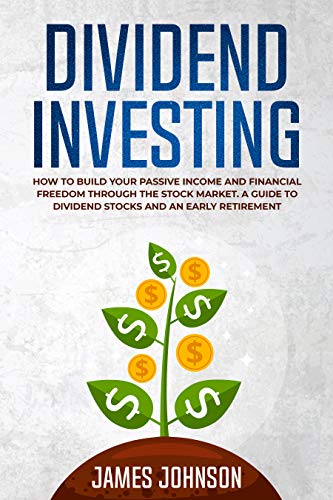
An forex quote can come in one of two formats: a direct or an indirect one. Direct quotes are the easiest to understand as they tell you how many foreign currency units you will need to purchase your home currency. To calculate the correct price for a European citizen traveling to the USA to purchase goods that are more than $100 USD you can simply divide the prices into units of 1.235656. For an indirect quote, however, you will need to do more math in order to calculate the exact conversion.
The highest bid price is the one that you pay
Financial markets play an important part in determining the bid and ask price. The bid price a buyer will pay to purchase a currency. And the ask price is the selling price a seller will accept. The spread is the difference between the bid and ask prices of a currency. Spreads are more stable assets if they are smaller. A higher bid will increase spread.

Ask price refers to the lowest price
What is the difference in the ask and bid prices for forex trading? The ask price represents the minimum price the seller is willing and able to accept. While the bid represents the maximum price the buyer is willing or able to pay. When both sides agree on a price, the offer is made. If you're negotiating, the minimum price is what you ask for. The bid is best if the other side refuses to accept it.
Percentage is the smallest unit in a forex quote.
The smallest unit within a forex quotation is the percentage in point (or pip). Pip is the smallest unit within a forex quote, as most currency pairs can be priced to four decimal place. Two additional units are also used in the forex market, ask and bid, to describe currencies' values. These units are also known as ticks. They are often represented with symbols like 'pi' or 'pip.
A forex quote can be viewed in currency pairs
You might be wondering, "What are currency pairs in a forex quote?" Two currencies are either similar in value or they are different currencies. These pairs are also known as currency pairs. They are often written with an slash between the quote and base currencies. One common example is the USD/EUR currency pair. One USD unit equals 1.14020 EUR units.

Interpreting a quote forex
Interpreting forex quotes can be difficult. It is difficult to interpret forex quotes correctly because there are so many ways to display them. Let's take a look at some of the options. The first way is to display the quotation as an exchange-rate, which indicates how much a specific currency is worth in the currency base. The second method displays the quotation as a price.
FAQ
How much do I know about finance to start investing?
No, you don’t have to be an expert in order to make informed decisions about your finances.
All you need is common sense.
Here are some tips to help you avoid costly mistakes when investing your hard-earned funds.
First, limit how much you borrow.
Don't get yourself into debt just because you think you can make money off of something.
Make sure you understand the risks associated to certain investments.
These include inflation and taxes.
Finally, never let emotions cloud your judgment.
Remember that investing doesn't involve gambling. To be successful in this endeavor, one must have discipline and skills.
This is all you need to do.
Do I need an IRA to invest?
An Individual Retirement Account (IRA) is a retirement account that lets you save tax-free.
You can contribute after-tax dollars to IRAs, which allows you to build wealth quicker. They offer tax relief on any money that you withdraw in the future.
For self-employed individuals or employees of small companies, IRAs may be especially beneficial.
Many employers offer employees matching contributions that they can make to their personal accounts. You'll be able to save twice as much money if your employer offers matching contributions.
What kind of investment vehicle should I use?
When it comes to investing, there are two options: stocks or bonds.
Stocks represent ownership in companies. Stocks offer better returns than bonds which pay interest annually but monthly.
Stocks are a great way to quickly build wealth.
Bonds, meanwhile, tend to provide lower yields but are safer investments.
Keep in mind that there are other types of investments besides these two.
They include real estate, precious metals, art, collectibles, and private businesses.
How can I get started investing and growing my wealth?
It is important to learn how to invest smartly. This will help you avoid losing all your hard earned savings.
Also, learn how to grow your own food. It's not as difficult as it may seem. You can easily grow enough vegetables to feed your family with the right tools.
You don't need much space either. Just make sure that you have plenty of sunlight. Plant flowers around your home. They are very easy to care for, and they add beauty to any home.
Finally, if you want to save money, consider buying used items instead of brand-new ones. Used goods usually cost less, and they often last longer too.
What type of investment has the highest return?
The answer is not what you think. It depends on what level of risk you are willing take. One example: If you invest $1000 today with a 10% annual yield, then $1100 would come in a year. If you were to invest $100,000 today but expect a 20% annual yield (which is risky), you would get $200,000 after five year.
In general, the higher the return, the more risk is involved.
The safest investment is to make low-risk investments such CDs or bank accounts.
However, you will likely see lower returns.
On the other hand, high-risk investments can lead to large gains.
You could make a profit of 100% by investing all your savings in stocks. But it could also mean losing everything if stocks crash.
Which is the best?
It all depends what your goals are.
To put it another way, if you're planning on retiring in 30 years, and you have to save for retirement, you should start saving money now.
If you want to build wealth over time it may make more sense for you to invest in high risk investments as they can help to you reach your long term goals faster.
Remember that greater risk often means greater potential reward.
You can't guarantee that you'll reap the rewards.
Statistics
- According to the Federal Reserve of St. Louis, only about half of millennials (those born from 1981-1996) are invested in the stock market. (schwab.com)
- As a general rule of thumb, you want to aim to invest a total of 10% to 15% of your income each year for retirement — your employer match counts toward that goal. (nerdwallet.com)
- They charge a small fee for portfolio management, generally around 0.25% of your account balance. (nerdwallet.com)
- Over time, the index has returned about 10 percent annually. (bankrate.com)
External Links
How To
How to Properly Save Money To Retire Early
Retirement planning is when your finances are set up to enable you to live comfortably once you have retired. It is the time you plan how much money to save up for retirement (usually 65). Consider how much you would like to spend your retirement money on. This includes hobbies and travel.
You don’t have to do it all yourself. Numerous financial experts can help determine which savings strategy is best for you. They'll examine your current situation and goals as well as any unique circumstances that could impact your ability to reach your goals.
There are two types of retirement plans. Traditional and Roth. Roth plans allow for you to save post-tax money, while traditional retirement plans rely on pre-tax dollars. You can choose to pay higher taxes now or lower later.
Traditional Retirement Plans
You can contribute pretax income to a traditional IRA. You can contribute up to 59 1/2 years if you are younger than 50. If you want to contribute, you can start taking out funds. The account can be closed once you turn 70 1/2.
You might be eligible for a retirement pension if you have already begun saving. These pensions will differ depending on where you work. Some employers offer matching programs that match employee contributions dollar for dollar. Some offer defined benefits plans that guarantee monthly payments.
Roth Retirement Plans
With a Roth IRA, you pay taxes before putting money into the account. After reaching retirement age, you can withdraw your earnings tax-free. However, there may be some restrictions. You cannot withdraw funds for medical expenses.
A 401 (k) plan is another type of retirement program. These benefits can often be offered by employers via payroll deductions. Employees typically get extra benefits such as employer match programs.
401(k).
Many employers offer 401k plans. These plans allow you to deposit money into an account controlled by your employer. Your employer will automatically contribute to a percentage of your paycheck.
The money you have will continue to grow and you control how it's distributed when you retire. Many people decide to withdraw their entire amount at once. Others may spread their distributions over their life.
You can also open other savings accounts
Some companies offer additional types of savings accounts. TD Ameritrade allows you to open a ShareBuilderAccount. With this account you can invest in stocks or ETFs, mutual funds and many other investments. Additionally, all balances can be credited with interest.
Ally Bank can open a MySavings Account. This account allows you to deposit cash, checks and debit cards as well as credit cards. This account allows you to transfer money between accounts, or add money from external sources.
What To Do Next
Once you know which type of savings plan works best for you, it's time to start investing! Find a reputable investment company first. Ask friends and family about their experiences working with reputable investment firms. For more information about companies, you can also check out online reviews.
Next, determine how much you should save. This involves determining your net wealth. Net worth includes assets like your home, investments, and retirement accounts. It also includes liabilities such debts owed as lenders.
Once you have a rough idea of your net worth, multiply it by 25. This is how much you must save each month to achieve your goal.
You will need $4,000 to retire when your net worth is $100,000.